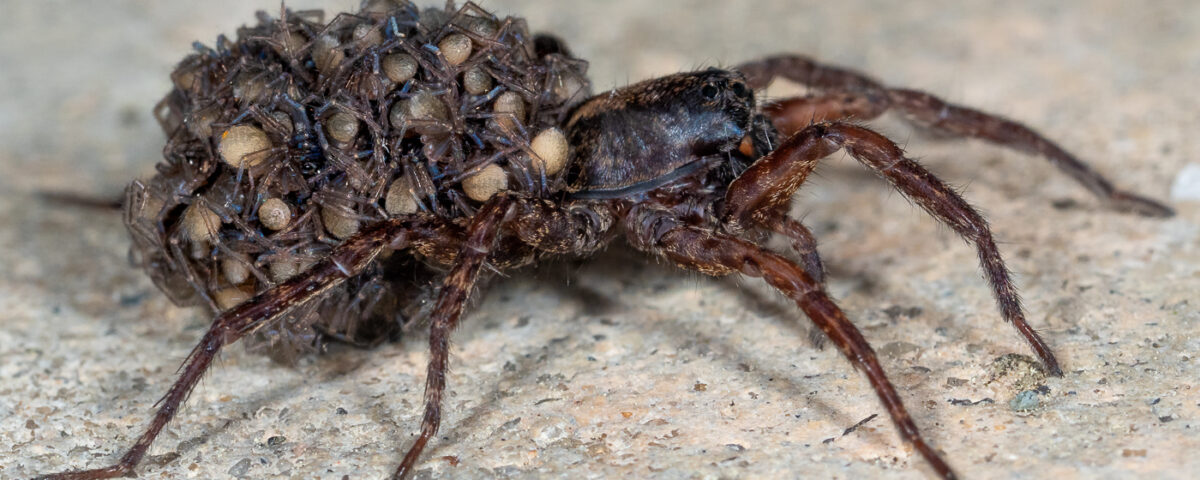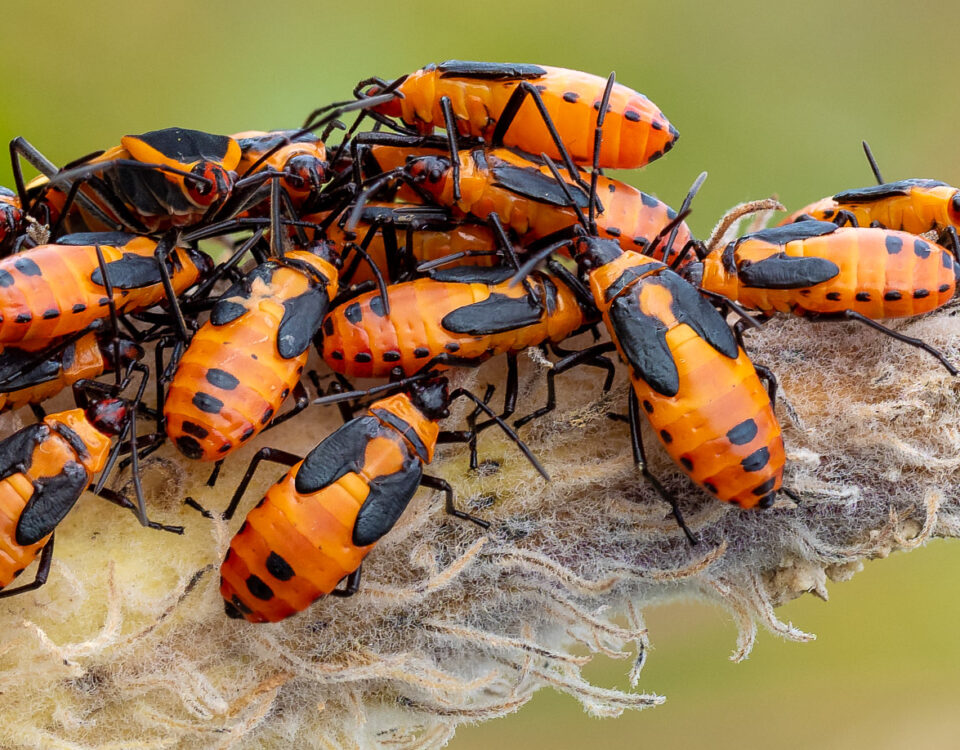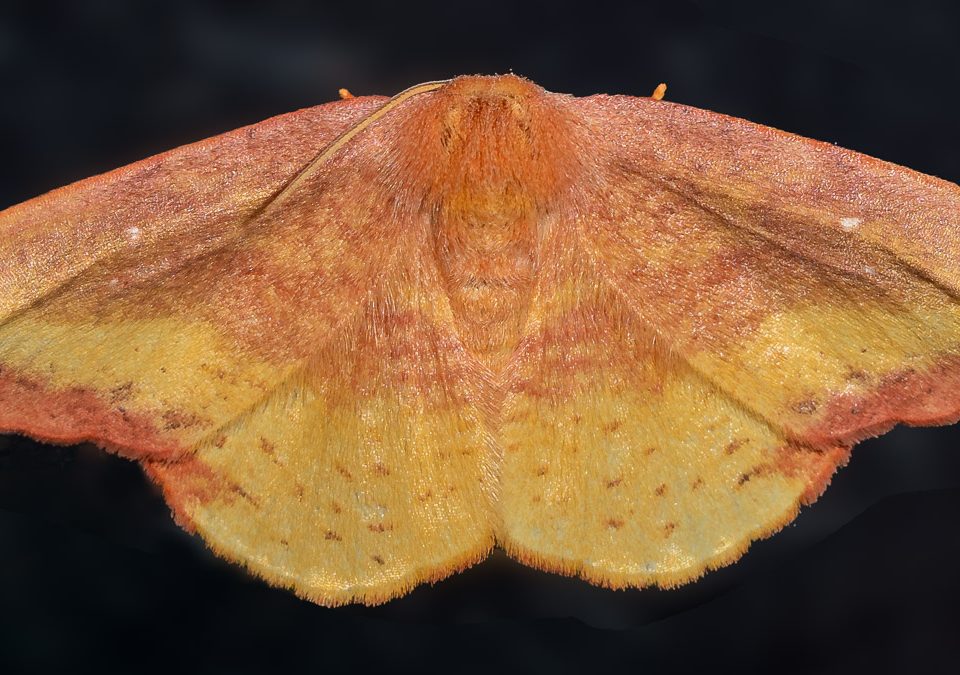Do bugs have caring moms?

Have you ever seen a Leafhopper?
January 21, 2024
Milkweed and its Fascinating Bugs
June 25, 2024Birds and mammals are renowned for their dedication to raising young that rely on parental care. But bugs? While motherhood doesn’t come to mind when we think about bugs, they don't all leave their young to fend for themselves.
Perhaps you’re thinking – I know an insect that provides maternal care! That’s why we have honey! Or maybe you’ve watched worker ants move babies when their nest is disturbed. Social colony insects, representing about 2% of all insect species, have developed unique behaviors around raising young. They include bumblebees, honey bees, ants and termites. These social insects are a fascinating story that I’ll come back to in a future article.
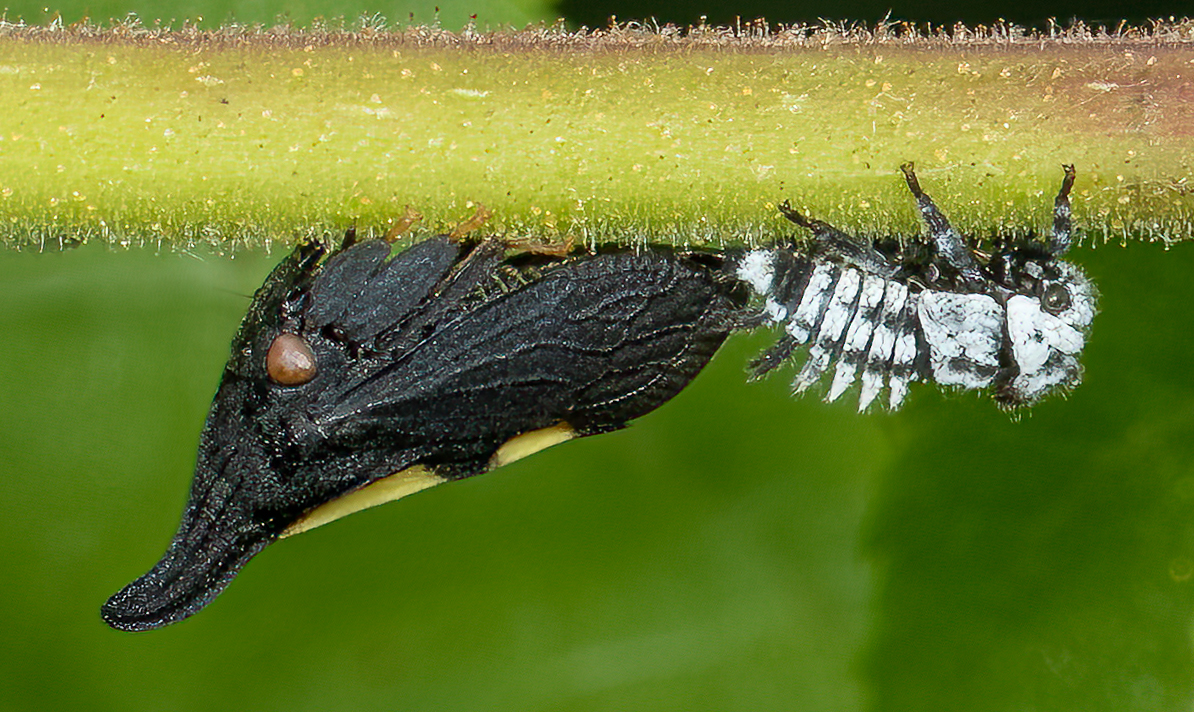
Burying Beetle parents work together to bury a carcass and feed nymphs regurgitated food.
Female insects mostly procreate by laying eggs. Some take great care to hide them. Many search out specific host plant species (or prey in the case of parasites) to lay them on. But their role is over once eggs are laid. Some wrap them in silk or leaves for natural protection. Butterflies and moths as an insect order use these techniques.
Other bugs build nests (sometimes elaborate) in protective locations and even provision nests with enough food for larvae to achieve adulthood. But nest building and egg provisioning is the extent of their role. An example is mining bees. She digs a tunnel, lays an egg in each tunnel, and provisions each with a pollen ball before closing the entrance.
The most basic level of actual maternal care are bugs that physically protect their eggs. These moms put themselves at risk of attacking predators and parasites. Then, once the eggs hatch, the job of most of these moms is done. Many of these are in the true-bug order. “Shield” bugs (that look a little like stink bugs) exhibit this behavior. So do many spiders. A Crab Spider foregoes food to stay with her eggs, depleting her reserves and dying as her eggs hatch.
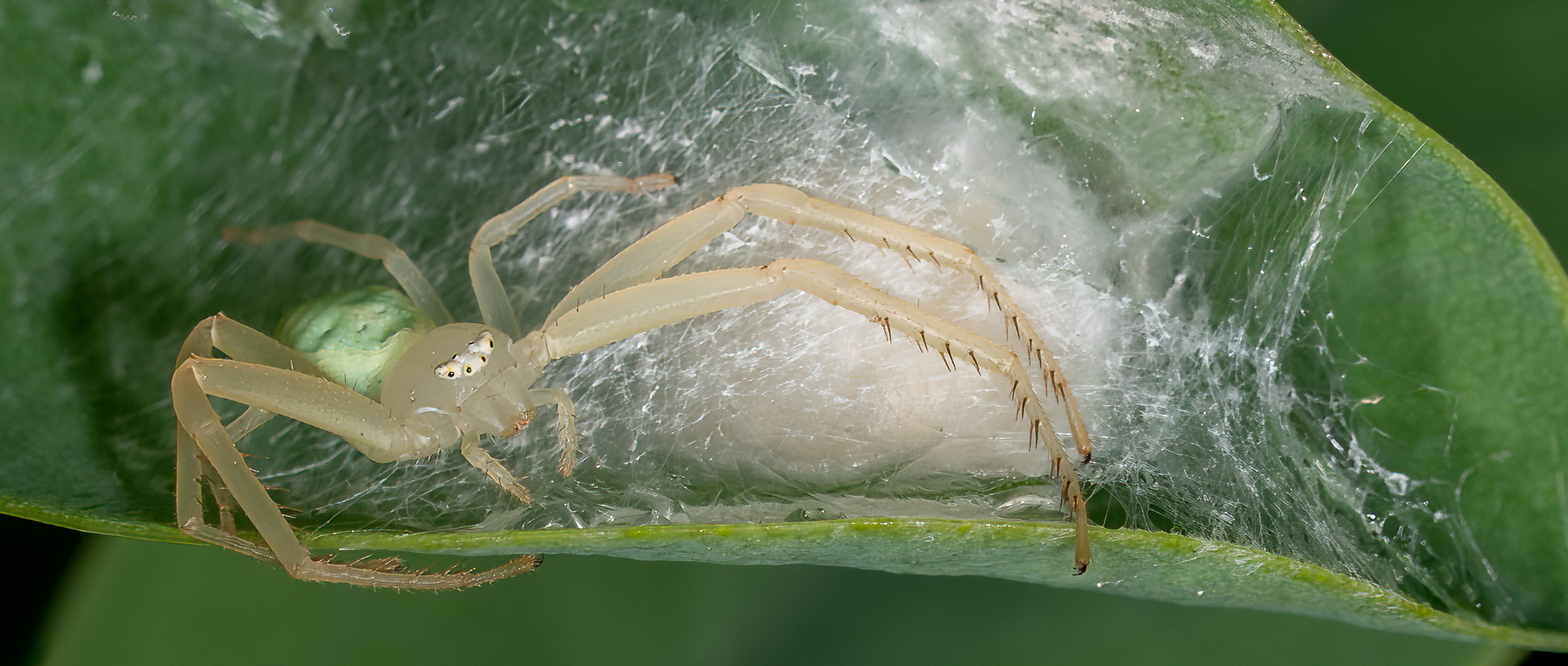
This Crab spider mom used silk to roll a leaf for a protected spot and will stay with her eggs foregoing food.
Prolonged care of bug nymphs beyond egg hatching is less common. While most bugs that build and provision nests never interact with the hatchlings, researchers are discovering some that bring more provisions as their larvae hatch, like the burrowing bug and wasp shown below. Other adults live along-side their nymphs, like the Lace Bug. While it was thought this was only because they have a long life and share a food source, researchers learned that if mothers were removed, nymph success rate to adulthood went down.

This White Margined Burrowing bug will return with more mint seeds to feed her young.
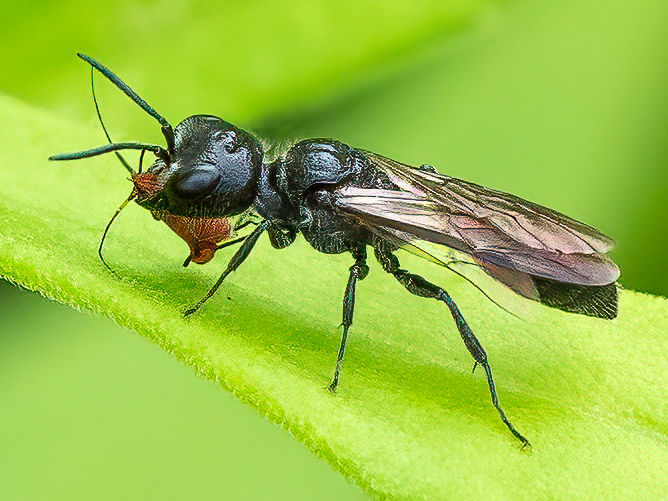
Pomphredon wasps capture, paralyze, and carry aphids to provision their nests and even return to feed early-stage young. In 2017, a team discovered a European species returning to feed late-stage young. This was a first-time discovery for any such insect.
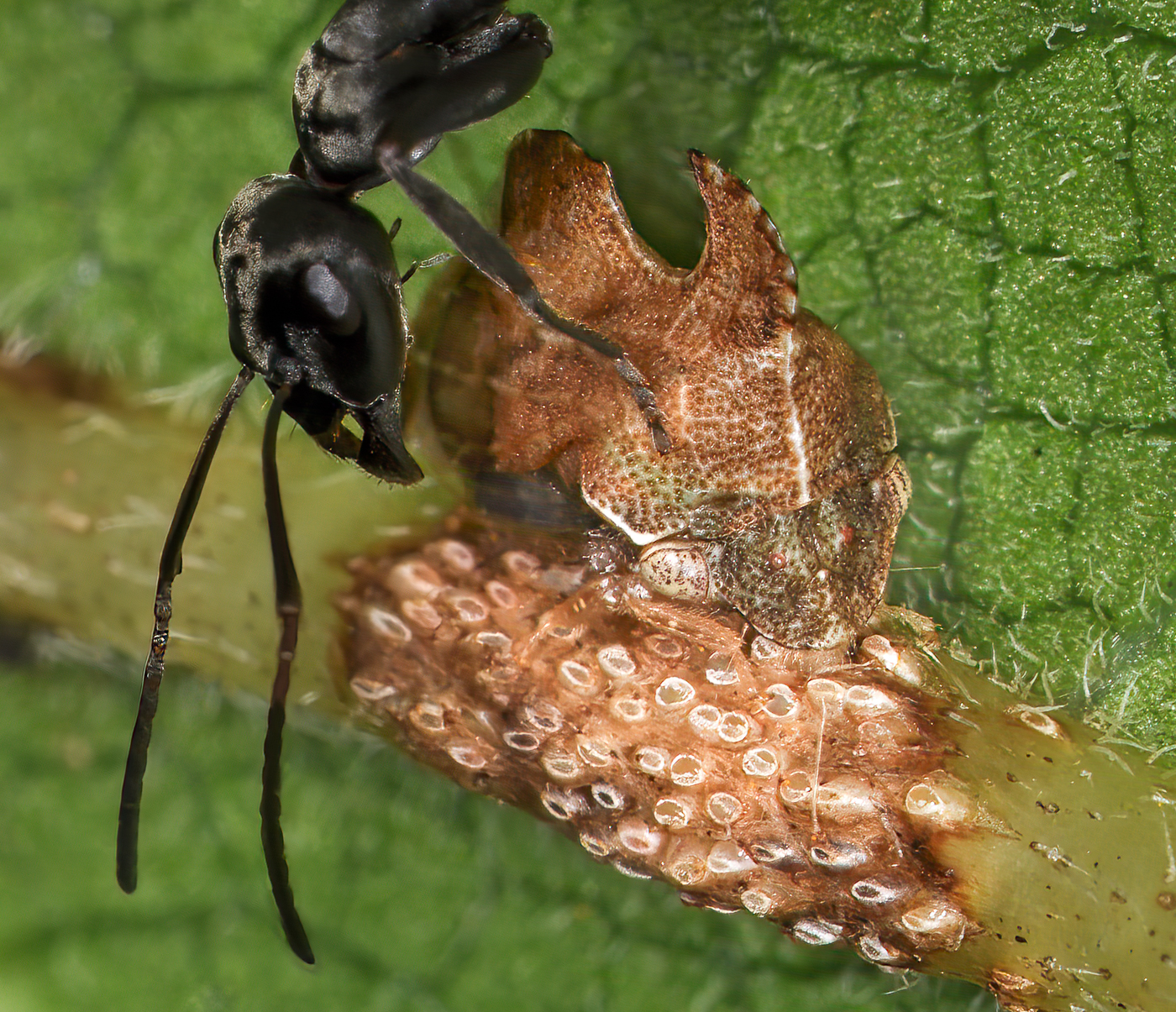
An ant tending to and stepping on a Treehopper mom, standing guard over the eggs she laid on a leaf stem.
Parental care is well known amongst many tree hopper species. Some females guard eggs, and others extend protection to the nymphs. One researcher observed a mom poking feeding holes because her early stage nymphs couldn’t penetrate the stem. Many tree hoppers communicate through plant vibrations, particularly for mating. This communication tool may extend to alert young of danger. A few tree hopper species have developed mutualism with ants who provide protection in exchange for their honeydew secretions. Or put a different way, ants “farm” tree hoppers for sugar. How maternal care participates alongside ant protection doesn’t seem to be well understood.
Lastly, there are a few species that provide elaborate care. Burying Beetles are the most ancient animal known to participate in active parenting. The male works with his mate to bury a carcass food source and defend it. As the young hatch, both parents feed the nymphs by regurgitating pre-digested food, similar to what birds do for nestlings.
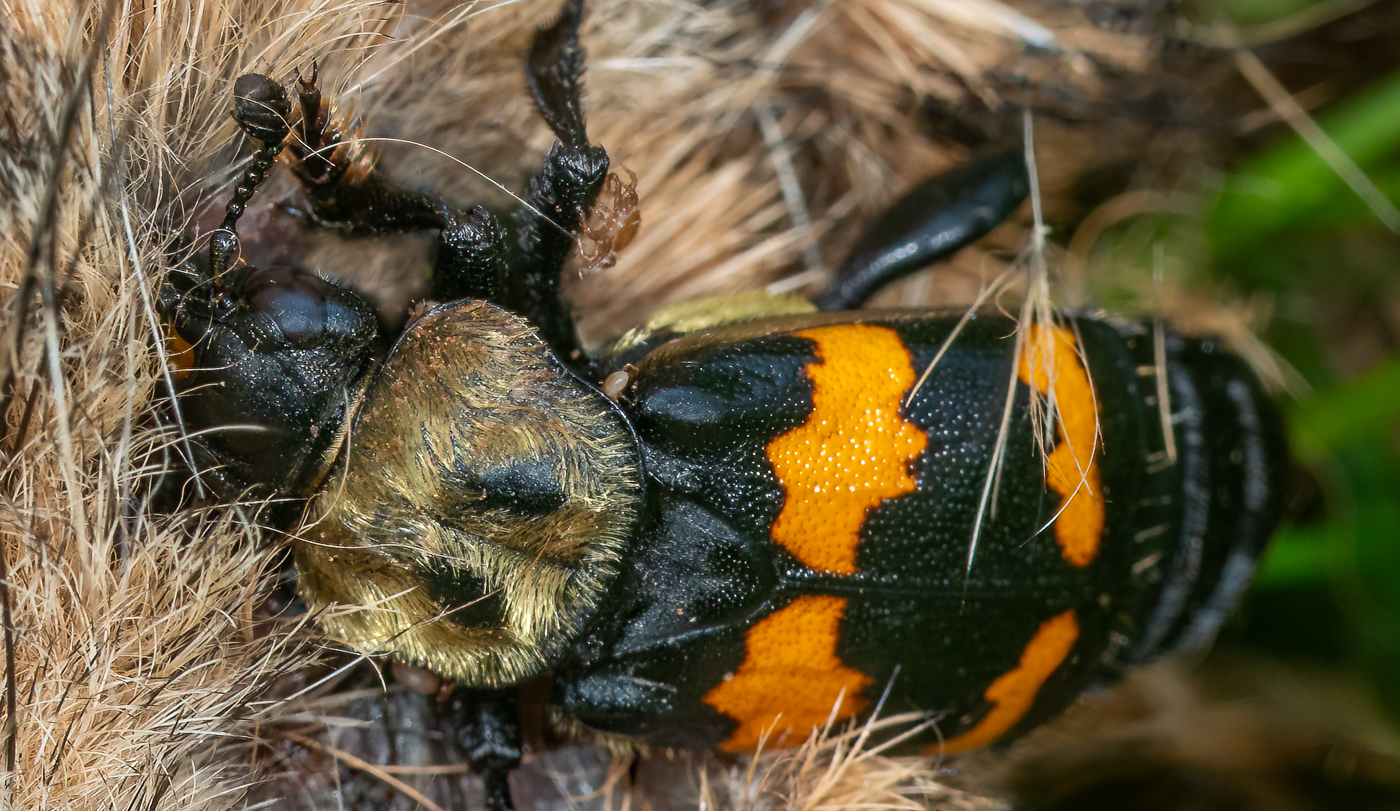
Burying Beetle parents work together to bury a carcass and feed nymphs regurgitated food.
While much of this motherhood is taking place in hidden locations, the dedicated mom you’re most likely to find is the Wolf Spider. She tries to stay hidden and mostly comes out at night, but she’s quite conspicuous when you see her. She carries her egg sac with her so she can continue to hunt.
When it’s time for her babies to hatch, she helps by perforating the egg sac. The spiderlets crawl out and up her leg, and then clench onto her back. They’ll remain there until ready to balloon away, days or weeks later depending on the species. While the spiderlets don’t feed until then, mom will take them to a water source and they’ll take turns leaving her abdomen to drink. Wolf spiders may scare you, but they’re natural pest control and good moms, so give them a break.


A Wolf spider mom carries her egg sac and young so she can continue to hunt (yes those are babies on her back!)

